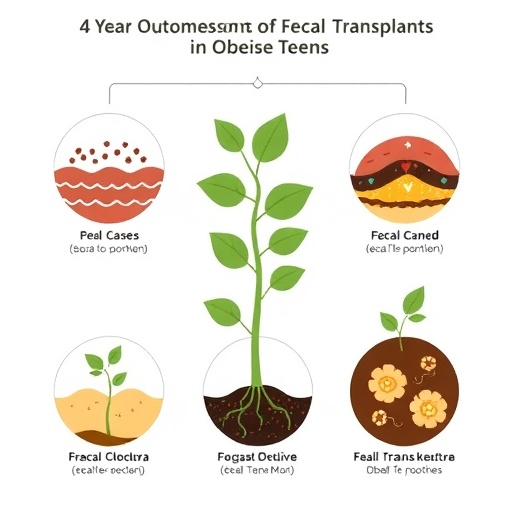
In a groundbreaking study published in Eur Geriatr Med, researchers Urzi, Å oberl, Caputo, and colleagues delve into the pressing issue of sarcopeniaâa condition characterized by the progressive loss of muscle mass and strength. This research marks a significant advancement in geriatric medicine, utilizing sophisticated machine learning techniques to identify risk factors associated with this debilitating condition. Sarcopenia poses a critical health risk to the elderly population, ultimately affecting their mobility, quality of life, and overall health status. As the global population ages, understanding the nuances of sarcopenia through innovative methodologies becomes increasingly vital.
Machine learning, a branch of artificial intelligence, plays a transformative role in analyzing complex data patterns. This study harnesses the power of machine learning to sift through multimodal data, including clinical, nutritional, and lifestyle factors that contribute to sarcopenia. Through this advanced approach, the authors aim to uncover hidden correlations that traditional statistical methods may overlook. By leveraging the capabilities of machine learning, the researchers are not only enhancing the accuracy of risk prediction but also fostering a deeper understanding of the mechanisms underlying sarcopenia.
The study’s methodology is both innovative and thorough. Researchers collected a wide array of data from a diverse cohort of participants, which included age, sex, body mass index (BMI), physical activity levels, dietary intake, and medical history. These multidimensional data points serve as vital inputs for the machine learning algorithms employed in the analysis. Specific algorithms were selected to optimize predictive accuracy, and the study meticulously evaluated various models to determine the most effective one for identifying sarcopenia risk factors.
Among the findings, some risk factors are particularly noteworthy. Lower levels of physical activity emerged as a significant predictor of sarcopenia. The study highlights how sedentary lifestyles can exacerbate muscle loss, emphasizing the importance of maintaining an active lifestyle for seniors. Moreover, nutritional factors such as protein intake were found to correlate strongly with muscle mass preservation, suggesting that dietary interventions could be effective in combating sarcopenia. The nuanced understanding of these relationships can guide future public health initiatives aimed at encouraging healthier lifestyles among the elderly population.
Importantly, the study did not solely focus on physiological factors; psychosocial elements were also incorporated into the analysis. Factors such as depression and social isolation were identified as significant contributors to sarcopenia risk. These insights reflect the complex interplay between mental health and physical well-being, urging healthcare providers to adopt a holistic approach when addressing the needs of older adults. The recognition of these multifaceted risk factors positions healthcare professionals to develop more comprehensive and targeted interventions.
The implications of this research extend beyond academia. It paves the way for developing predictive models that could inform clinical practice and guide healthcare professionals in identifying at-risk individuals before severe symptoms manifest. Early identification of sarcopenia allows for timely interventions, which could significantly improve patient outcomes. This proactive approach to elderly care underscores the importance of integrating technological advancements into regular medical practice.
In addition to its immediate clinical relevance, this research also opens the door for future studies. The promising results encourage further exploration into the genetic and molecular mechanisms of sarcopenia. By understanding the biological underpinnings of muscle degeneration, researchers might identify novel therapeutic targets, potentially leading to groundbreaking treatments in the years to come. This is a forward-thinking perspective, as it emphasizes the need for ongoing research into aging and its associated conditions.
As machine learning continues to evolve, it is crucial that researchers remain mindful of its limitations. The study acknowledges that while machine learning can enhance prediction capabilities, the interpretability of complex models may pose challenges. Thus, there is a concerted effort within the research community to develop techniques that ensure these models are not only accurate but also transparent. Stakeholders need to understand how predictions are made to promote trust in these innovative approaches among healthcare professionals and patients alike.
This research contributes valuable insights into the intersection of technology and geriatric medicine, showcasing the benefits of utilizing advanced analytics in understanding age-related health issues. As we advance, fostering an environment that embraces multidimensional research methodologies will be essential in addressing the challenges posed by an aging global population. The study serves not only as a foundation for future exploration but also as a call to action for healthcare professionals, researchers, and policymakers to prioritize the health of elderly individuals.
The integration of machine learning in determining sarcopenia risk factors symbolizes a shift toward personalized medicine, where interventions can be tailored to individual needs based on predictive analytics. The implications of this research transcend the realm of sarcopenia, offering a template for utilizing machine learning in other geriatric and chronic conditions that affect older adults, further reinforcing the potential of technology-enhanced healthcare.
As communities continue to grapple with the aging population, this study stands as a beacon of hope, illustrating how innovative research can foster better health outcomes. The era of precision medicine is on the horizon, and understanding conditions like sarcopenia through advanced methodologies is paramount in realizing this vision. The authors have taken a significant step toward integrating technology into healthcare, demonstrating that the future of medicine lies in the intersection of data and patient care.
Sarcopenia is more than a mere clinical concern; it encapsulates broader societal implications as well. The loss of muscle strength and mass can lead to increased morbidity and healthcare costs, underscoring the urgency to address this condition proactively. By utilizing machine learning to identify and mitigate risk factors, the research sets the stage for fostering healthier aging populations and minimizing the adverse effects associated with sarcopenia.
In conclusion, the study by Urzi, Å oberl, Caputo, and their team signifies a crucial advancement in our approach to elderly health. The utilization of machine learning in identifying sarcopenia risk factors sheds light on valuable interventions and stresses the importance of a comprehensive approach to elderly care. As we move forward, integrating advanced technologies in medicine will be essential in reshaping our understanding and management of aging-related conditions, ultimately enhancing the quality of life for older adults worldwide.
Subject of Research: Identifying risk factors for sarcopenia using machine learning based on multimodal data.
Article Title: Identifying risk factors for sarcopenia using machine learning: insights from multimodal data.
Article References:
Urzi, F., Å oberl, D., Caputo, O. et al. Identifying risk factors for sarcopenia using machine learning: insights from multimodal data.
Eur Geriatr Med (2025). https://doi.org/10.1007/s41999-025-01245-5
Image Credits: AI Generated
DOI:
Keywords: Sarcopenia, machine learning, risk factors, geriatric medicine, multimodal data, elderly health, predictive modeling.
Tags: advanced statistical methods in geriatric researchartificial intelligence in health researchclinical nutrition and sarcopeniaelderly health and muscle lossinnovative methodologies in aging studiesmachine learning in geriatric medicinemultimodal data analysis for sarcopeniapredictive analytics in healthcarequality of life and mobility in the elderlysarcopenia risk factors identificationtransformative impact of machine learning on aging.understanding sarcopenia through data patterns




